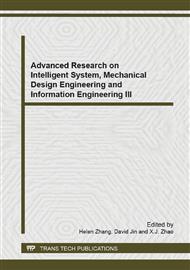p.169
p.173
p.177
p.181
p.185
p.189
p.197
p.202
p.208
Applied-Information Technology in Fusion SVM Partial Least Squares Analysis of Experimental Data in the Body of PET
Abstract:
Experimental data for the human body PET multi-variable, non-linear distribution and other characteristics, the use of fusion partial least squares support vector machine variables effectively extracted from the principal component, reducing the number of variables and the exclusion of noise information to construct a linear regression with the dependent variables model, fitting the model has good accuracy and generalization for PET clinical trials provide effective technical support and research ideas.
Info:
Periodical:
Pages:
185-188
Citation:
Online since:
May 2014
Authors:
Keywords:
Price:
Сopyright:
© 2014 Trans Tech Publications Ltd. All Rights Reserved
Share:
Citation:


